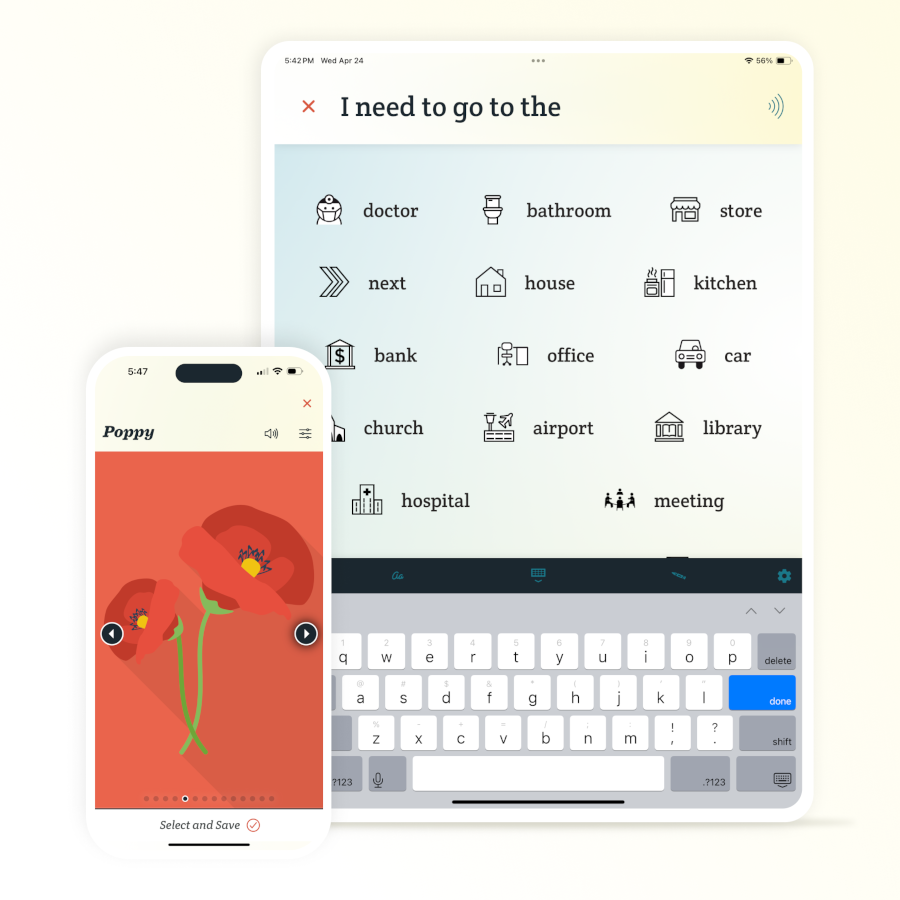Affordable Alternatives to AAC Devices
If you’re considering an augmentative and alternative communication (AAC) device for yourself or a loved one, you already understand the difference these tools can make for someone with communication challenges. Since you’ve found yourself on this page, it’s also likely that you’ve discovered the staggering cost — often thousands of dollars — that makes these devices feel out of reach without insurance.
The good news? Affordable alternatives exist. There are apps that can turn everyday smartphones and tablets into powerful communication tools, providing the same critical support without the financial strain. This guide explores why AAC apps are a practical, budget-friendly solution and how they stack up against traditional AAC devices.
Quick Recommendation
Looking for an affordable solution to alternative communication? Try Spoken - Tap to Talk AAC. It transforms your smartphone or tablet into a powerful communication tool easily comparable to a dedicated device. You can find it on Google Play and Apple. Download it today and start communicating in minutes.
Why Are AAC Devices So Expensive?
The high prices of dedicated communication devices rarely reflect advanced technology or groundbreaking features. The usual reason they cost so much is because they’re priced for insurance companies, not everyday users. This might be fine if you have comprehensive coverage or access to a special funding program, but can be a serious problem if you have to pay out-of-pocket.
What You’re Really Getting
Most augmentative and alternative communication devices aren’t as specialized as their price tags suggest. Often, they’re standard tablets — like iPads or other off-the-shelf devices — that have been stripped of non-communication features such as internet access or app stores. These restrictions are necessary for insurance coverage, which typically won’t pay for devices that can also be used for leisure. So, ultimately, you’re getting less for more.
While some AAC devices do feature unique hardware, such as eye-tracking systems, these are the exception rather than the rule. Most are just standard tablets encased in durable shells, sold at a steep markup to maximize profits from insurance companies. While these devices can still be valuable tools, their prohibitive costs make them inaccessible to anyone without comprehensive insurance.
AAC Apps: A Cost-Effective Solution
Now that you know AAC devices are often just pared down tablets, it should come as no surprise that their software can be replicated by apps on your existing devices, including your smartphone. Whether you use iOS or Android, you should be able to find plenty of AAC apps on your app store. Naturally, these cost a fraction of the price of an entire device.
Unlike dedicated devices, which may only be affordable with insurance, AAC apps are budget-friendly options. Their pricing models range from free versions with basic functionality to premium features that still come in well below the cost of traditional hardware.

We’d be remiss if we didn’t mention Spoken - Tap to Talk AAC, our own app. Spoken is designed with powerful features, including advanced predictive text, word suggestions that can adapt to your current location or activity, and customizable voices, making it as featureful as many traditional AAC devices but at a fraction of the cost.
Key Benefits of AAC Apps vs. Devices
Accessibility and Affordability
Traditional AAC communication devices can be difficult or impossible to afford for some families. In contrast, AAC apps like Spoken are available for download directly from app stores and are often free to try. This makes AAC much more accessible for individuals without insurance or financial resources.
No Wait Time
Even if you have the insurance to cover a dedicated AAC device, it may take a while before you can get your hands on it. In contrast, AAC apps like Spoken can be downloaded and used immediately. Users don’t need to wait for insurance approvals or deal with any other lengthy processes. Apps are available on common platforms like the Apple App Store or Google Play and can be installed on any smartphone or tablet. This means that users can start communicating in minutes, not months.

Versatility and Convenience
Since they work on mobile devices that people already use daily, AAC apps like Spoken make communication seamless. A single device can serve multiple purposes outside of communication, like browsing the internet or reading e-books. Dedicated AAC devices generally don’t allow you to access anything but the communication software. Plus, it’s nice to only have to carry around one device. If you opt to download an AAC app on your phone, it can even fit in your pocket, making it easier to carry around than a bulky tablet.
Continuous Updates and Improvements
AAC apps receive regular updates to introduce new features or improve existing ones, while traditional AAC devices can quickly become outdated and require expensive upgrades. Spoken, for example, continuously evolves to add new features based on user suggestions.
Try It Before You Buy It
Many AAC applications offer a trial period or have a lite version with limited features. This makes it easier to decide which augmentative or alternative communication option is right for you. Because of the time it takes to receive a dedicated device, trialing various options may be impractical or impossible.
How AAC Apps Work Just as Well (or Better)
Functionally, there isn’t a substantial difference between an AAC device and an AAC app. With a few rare exceptions, apps are fully capable of replicating everything a dedicated device can do, offering the same level of communication support. In some cases, apps may even have superior functionality. For instance, Spoken offers these unique features in addition to ones similar to those found on expensive AAC devices:
- Advanced Word Predictions: Spoken learns from its users’ unique ways of communicating and can accurately predict what words they’ll need, streamlining the communication process.
- Context-Aware Vocabulary: Spoken can adapt to the user’s vocabulary needs based on their environment or activity, making it more responsive to real-life situations like ordering food at a restaurant or attending school.
- Convert drawings to speech: Spoken can recognize simple drawings and translate them into text, which can be spoken out loud.
Overcoming Barriers to AAC Use
Many individuals avoid adopting AAC tools because of the high costs or stigma associated with large, dedicated communication devices. By opting for an app like Spoken, users can discreetly use AAC on their phones or tablets, blending in with everyday technology while also saving money.
Spoken’s ability to work on a device the user already owns not only reduces costs but also makes communication more natural, helping break down the social barriers that sometimes come with using large, specialized AAC devices.
Ready To Try an AAC App?
If the high cost of a dedicated AAC communication device has made it unattainable, you’re in luck. AAC apps provide the same essential tools for communication at a fraction of the price, all while working on the devices you already own.
Spoken isn’t just a budget-friendly alternative — it’s a powerful communication tool designed with your needs in mind. With features like advanced predictive text, context-aware vocabulary, and customizable voices, Spoken empowers users to communicate more naturally and effectively. Plus, since it works on your smartphone or tablet, you can download it today and start using it within minutes.